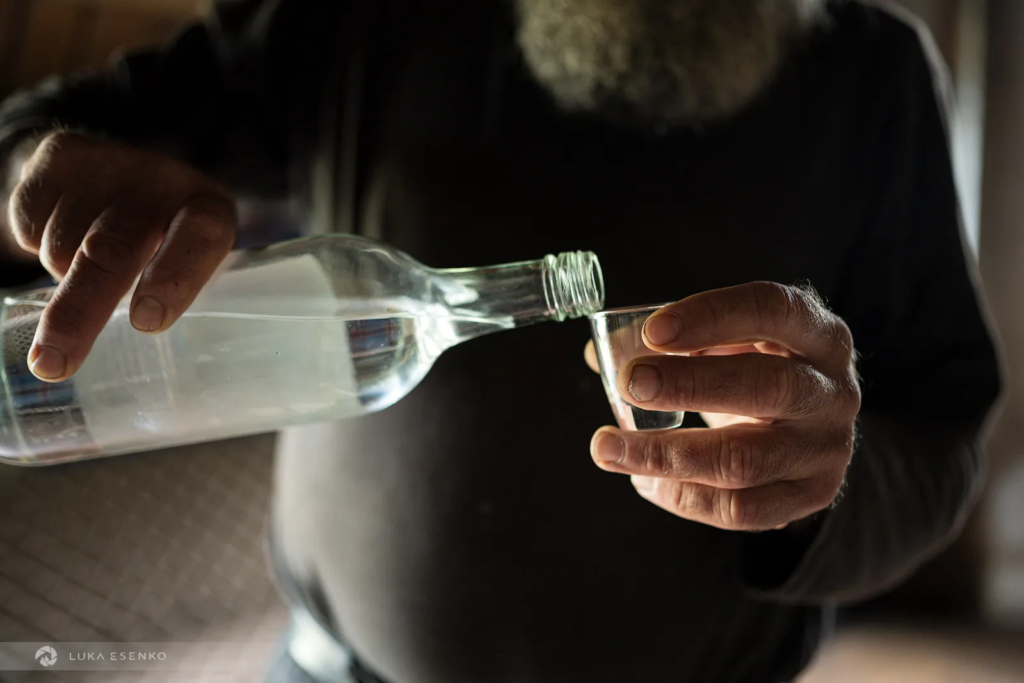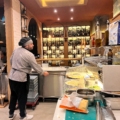Rakija is a cornerstone of Montenegrin tradition, deeply rooted in the culture of the people, which follows them through all stages of life. This alcoholic beverage is an essential part of all gatherings, celebrations, and everyday life.
Rakija is considered to be a fruit brandy, and regardless of the flavour you try, you will enjoy its harsh yet enjoyable aroma. This baverage is traditionally made from grape and pear, but you can find different other flavours on the market. The diversity of rakija is embodied in different regions and production methods.
In order to discover more about this traditional Balkan alcoholic beverage, keep reading as we bring you all the information you need to know about rakija in Montenegro.
Rakija: Simbol of Montenegrin Culture
Rakija has been part of the local tradition for centuries. It is believed that the production started during the Ottoman era in small family-owned destilleries. Each region has developed its own style and method of production, which is often passed down through generations. In rural areas, even today, homemade rakija is considered a valuable household offering. It is used not only for drinking but also for medicinal and ceremonial purposes. Even the process of making this fruit brandy is considered an important event which gathers friends and family.

If you visit a true Montenegrin family, you will be served with rakija as it is a welcome gesture to guests. Also, it is offered at celebrations such as weddings and religious holidays and is even used in traditional remedies.
Drinking rakija is a social ritual, often accompanied by a toast of Živjeli! (Cheers!). It is also customary to drink slowly, savoring its warmth and strength. Very often, you will see old people drink rakija in the morning before eating anything, which is considered very healthy.
Different Types of Fruit Brandy
Montenegro produces a wide range of rakija, with the most popular types including:
- Lozova Rakija (Lozovača), is the most recognisable rakija type produced in the country. This is grape-based rakija, known for its strong but smooth taste.
- Šljivovica, a plum-based rakija, is the type that is most often made throughout the Balkans. It is slightly sweeter than lozovaca with a nice gold color.
- Kruškovača or Kruska is a rakija produced from pear. It is well known for its mild, fruity taste. Also, it is often sold in bottles that have a whole pear in the bottom.
- Medovača is rakija infused with honey, which gives it a smoother, slightly sweet taste.
- Travarica, is a herbal rakija infused with various medicinal herbs and is often considered a digestive aid.

Tips and Tricks for Tasting the Best Rakija
Because of the popularity that this national drink has, in Montenegro you can find a variety of high-quality rakija producers. However, there are definitely some features you should look for prior to your rakija journey.
Producers in Montenegro range from large-scale wineries to small, family-run distilleries. One of the most well-known brands is Plantaze and their Lozovaca, produced by Montenegro’s largest winery. This is one of the traditional rakijas renowned for its smooth and refined grape flavour.
For those seeking a more traditional and artisanal experience, Crnogorski dukat is another award-winning small-batch product worthy of your attention. Each of these brands represents a different aspect of Montenegro’s rakija culture, from mass production to carefully curated, limited-edition spirits. There is also a variety of small family owned distilleries and home-made craftsmanship which can be found in the local restaurants or stores.

When speaking about savouring rakija, it is important to understand that this is truly a ritual for Montenegrins. Therefore, expect that rakija will be served to you at room temperature in small glasses, which are specifically designed to allow the flavors to develop fully. Rakija is also commonly paired with local delicacies such as Njeguški pršut (Montenegrin prosciutto), aged cheese, olives, and fresh bread.
Buying
Finding high-quality rakija in Montenegro requires knowing what to look for. The best way to ensure you are tasting something authentic is to seek local family produce. If not, then make sure to smell rakija before tasting. It should be aromatic and well-balanced, with no overpowering alcohol burn.
One key indicator of quality is the distillation process. Therefore, when searching for a homemade and small-batch alcoholic beverage of any kind, see if it is double-distilled. This results in a smoother and more refined taste.

Another factor to consider is the alcohol concentration, as traditional Montenegrin rakija typically ranges between 40-50% ABV. Homemade varieties can be stronger. High-quality products should feel warming but not excessively harsh while being made from 100% natural ingredients with no added sugars or industrial ethanol.
When buying rakija, it’s always best to purchase directly from local producers, on the local markets or specialised stores that can help you with the selection. If you choose to buy it from the store, make sure to check the label for details on production methods, ingredients, and origin.
Conclusion
Montenegro’s rakija culture is rich, diverse, and deeply ingrained in everyday life. In our blog, you can see the versatility that tasting brings you and the numerous details you should pay attention to when trying it. We suggest you start with the famous lozovaca of Plantaže or medovaca if you prefer sweeter alcohol. However, exploring different brands, visiting local producers, and understanding elements of high-quality products can make for an unforgettable experience.
We hope our blog helped you uncover the idea of Montenegrin fruit brandy and some of the best brands to try while visiting the country. We are certain that if you choose to taste rakija, and you do it slowly, with good company and delicious Montenegrin food, you will have a great experience.






